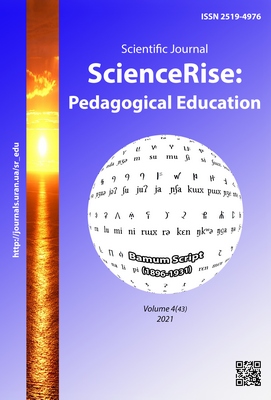Strategies for making management decisions in information and analytical activity
DOI:
https://doi.org/10.15587/2519-4984.2021.238041Keywords:
strategy, information, analytics, management, research, decision, analysis, algorithm, information analyticsAbstract
The aim of the study is to substantiate and analyze the strategy of managerial decision-making in information and analytical activities, to specify the main aspects of analytics for decision-making.Strategies for making managerial decisions in information and analytical activities are substantiated. The relevance of the use of information-analytical research is determined. The main aspects of analytics for decision making are analyzed, as well as the ranging of classes according to the degree of intelligence and complexity of tasks is taken into account. The peculiarities of completeness and reliability of information for information-analytical research are revealed. It is determined, that information analytics is a component of management.The regional management analytics is analyzed, as a result of which it is proposed the scheme of regional management with the use of information and analytical support is offered. The basic principles of design are offered. It is proved, that the management system requires modern analytical support, performed according to the requirements of science, the latest methodologies, including information and analytical activities. Problems and negative sides in the process of information-analytical activity in the system of regional management are determined. It is noted, that information and analytical support helps to achieve the best results, and the effectiveness of activities in any field depends on the management system.
The obtained research results will allow will improve planning, organization and coordination of managerial decision-making and will help to form a significant information capital for making relevant management decisions at all hierarchical levels of management
References
- Silkova, H. V. (1998). Osnovy informatsiino-analitychnykh doslidzhen. Rivne: RIS KSU, 50.
- Zakharova, I. V., Filipova, L. Ya. (2013). Osnovy informatsiino-analitychnoi diialnosti. Kyiv: Tsentr uchbovoi literatury, 336.
- Peleshchyshyn. A., Yakovyna. V., Dobrovolska, V. (2019). Cultural Institution Information Pattern Formation within Social Media Communities. Proceedings of the 1st International Workshop on Control, Optimisation and Analytical Processing of Social Networks (COAPSN-2019). Lviv, 42–53. Available at: http://ceur-ws.org/Vol-2392/paper4.pdf
- Kobieliev, O. M. (2013). Informatsiino-analitychna diialnist bibliotek Ukrainy: teoretyko-metodolohichni zasady rozvytku. Kharkiv, 192.
- Andersen, T., Schrøder, P. (2010). Strategic Risk Management Practice: How to Deal Effectively with Major Corporate Exposures. Cambridge: Cambridge University Press. doi: http://doi.org/10.1017/cbo9780511816017
- Bedford, T., Cooke, R. (2001). Probabilistic Risk Analysis : Foundations and Methods. Cambridge: Cambridge University Press. doi: http://doi.org/10.1017/cbo9780511813597
- Griffin, A. (2007). New Strategies for Reputation Management: Gaining Control of Issues, Crises & Corporate Social Responsibility. London: Kogan Page Publishers.
- Danyliuk, O.A. (2017). Matematychnyi praktykum v seredovyshchi MATHCAD. Prosti obchyslennia i redahuvannia. Ternopil: TNPU, 30
- Danyliuk, O. A. (2019). Kompiuterno analitychna diialnist. Ternopil: TNPU, 148..
- Petryshyn, L. Y. (2018). Strategies for modelling of creativity of social pedagogues in the educational process. Naukovyi visnyk Uzhhorodskoho natsionalnoho universytetu. Seriia: Pedahohika. Sotsialna robota. Uzhhorod, 1 (42), 173–178.
Downloads
Published
How to Cite
Issue
Section
License
Copyright (c) 2021 Olha Danylyuk, Lyudmyla Petryshyn

This work is licensed under a Creative Commons Attribution 4.0 International License.
Our journal abides by the Creative Commons CC BY copyright rights and permissions for open access journals.
Authors, who are published in this journal, agree to the following conditions:
1. The authors reserve the right to authorship of the work and pass the first publication right of this work to the journal under the terms of a Creative Commons CC BY, which allows others to freely distribute the published research with the obligatory reference to the authors of the original work and the first publication of the work in this journal.
2. The authors have the right to conclude separate supplement agreements that relate to non-exclusive work distribution in the form in which it has been published by the journal (for example, to upload the work to the online storage of the journal or publish it as part of a monograph), provided that the reference to the first publication of the work in this journal is included.








